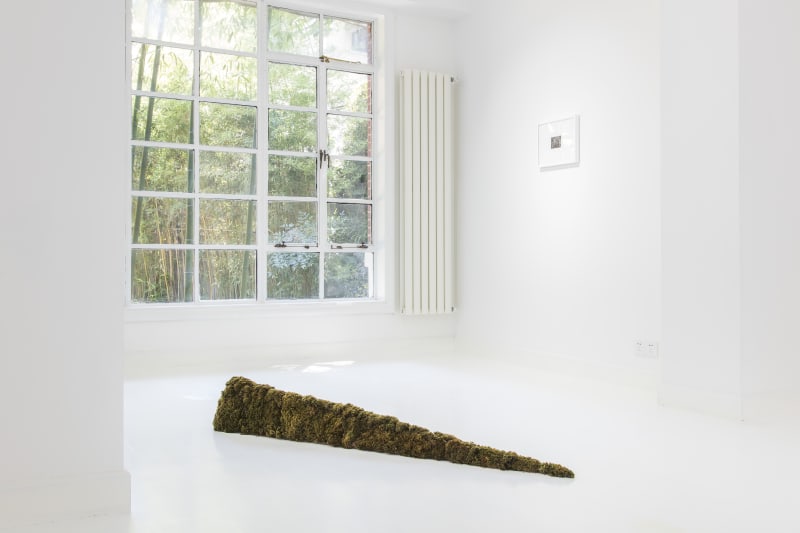The recent solo exhibition of Alice Wang at Capsule Shanghai is influenced by the works of process artists, such as Cuban minimalist Felix Gonzalez-Torres, who was known for a keen awareness of his audience's experience and for creating solo shows with a group show dynamic.
A mimosa pudica sculpture greets guests by the entrance of the all white gallery space. The domesticated plant stands in vital contrast to the manicured lawn outside, setting the tone for an outer body experience and hinting at a larger energy connection beyond the living organism.
All the works are untitled. Like Gonzalez-Torres, Wang hopes to liberate her works from specific meaning. Thus, ceramic, clay, silver, copper and beeswax exist in their own right.
The room to the right and beyond feature three works laid out on the ground: a work composed of white ceramic pieces, a moss-covered long cone with aggressive sharp corners, and silver clam fossils in the formation of a small half-dome.
They feel at ease in a natural position, reminiscent of sculptor Anthony Caro, who usually placed works directly on the ground, without a base. Each sculpture is abruptly changed from occupying a vertical space into a lateral spread. Traditionally, sculpture is placed in a square or in open space, but Caro preferred courtyards. Caro's sculptures were mostly painted monotone, a deliberate decision to make it difficult for viewers to judge the texture and weight of the works, in order to strip the history of the original material.
When introducing her work, Wang said: "Sculpture is not only a form, but a transformation of form. If you understand sculpture only from the material, it becomes limited to it. Meaning comes from experience, and the meaning of this exhibition is also changing all the time."
"For example, the clam fossils change over time, the silver on the outside changes. Hanging on the wall is a symbol of meteorites and iron. When the stars die, iron is produced, and when you see it, you think the stars can be destroyed at any moment. The moss is alive, and requires attention. We have to remind ourselves to water it and not let it die."
The association of tangible and intangible meanings continues in another room where a large copper plate continuously perspires. Shanghai is humid, causing the work to undergo a silent transformation and disappearance. A tall block stands beside the copper work, with an outer layer composed of yellow beeswax. A large circular hole is punched out near the top. The negative space, which is lined with silver foil, emits wind. At the intersection of the flat surface and three-dimensional, the positive and negative, the natural and artificial, a wind passes through.
Walking past the mimosa pudica and into the room to the left of the entrance, one finds another beeswax piece, this one in the shape of a triangular wedge. The sloped surface is covered with small, perforated holes arranged in neat rows through which white mist is emitted. The invisible wind is captured by water; two objects of the same material share internal consistency in different forms.
Finally, a video leaves some clues to the interpretation of the exhibition. The nine-minute work is part artist visual diary, part enigmatic coda, and features subtitles in lieu of voice narration. Wang said: "The earth and the sun will probably collide five billion years from now, which is a sad hypothesis. But it's not that difficult to accept. We need to accept that this is a natural cycle that can't be changed."
Translated from the Chinese by Philana Woo



